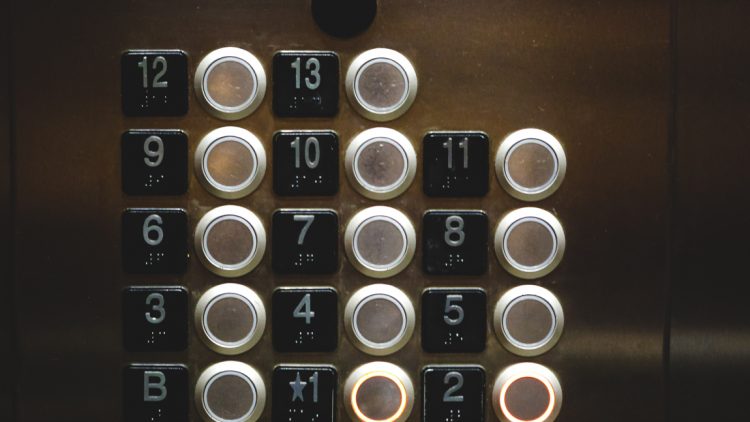How Do Hydraulic Elevators Work?
Hydraulic elevators do not use overhead machinery to hoist the cart, unlike common traction elevators. Instead of machinery to hoist, these elevators use the compression of fluids to generate upward and downward movement. The elevator cab is then lifted by an electric motor which pumps oil into the cylinder. This results in the movement of the piston.
To control the release of oil, hydraulic elevators incorporate electrical valves to ensure a pleasant ride for all elevator occupants. The fluid that is needed for these carts to operate must be oil-based. Some machines will utilize vegetable oil as a more environmentally-friendly option.
A hydraulic elevator is a type of elevator that operates using a hydraulic system to move the elevator car (or cab) between different floors of a building. Unlike traction elevators, which are typically powered by electric motors and use steel ropes or belts to hoist the elevator car, hydraulic elevators use a hydraulic fluid and a piston to control vertical movement. Here’s how a hydraulic elevator works:
- Elevator Cab: The elevator cab is the part of the elevator that passengers ride in. It is typically suspended by steel ropes or belts.
- Hydraulic Piston: Below the elevator cab, there is a hydraulic piston that extends and retracts. This piston is typically located in a cylindrical chamber filled with hydraulic fluid.
- Hydraulic Pump: The hydraulic pump is responsible for moving the hydraulic fluid into and out of the piston chamber. When the pump pushes hydraulic fluid into the chamber, it causes the piston to extend, lifting the elevator cab. When the pump retracts the fluid, the piston descends, lowering the cab.
- Control System: An electronic control system manages the operation of the hydraulic elevator. Passengers select their desired floor using buttons or a control panel inside the elevator, and the control system manages the movement accordingly.
Advantages of hydraulic elevators include:
- Smooth Ride: Hydraulic elevators are known for their smooth and quiet ride, making them suitable for buildings with residential or low-rise commercial applications.
- Reliability: They are generally reliable and have a long service life with proper maintenance.
- Energy Efficiency: Hydraulic elevators are often more energy-efficient than traction elevators, especially for low to medium-rise buildings.
- Space Efficiency: Hydraulic elevators require less overhead space for the machinery compared to traction elevators, which can be beneficial in buildings with height restrictions.
- Emergency Lowering: In the event of a power failure or malfunction, hydraulic elevators typically have safety mechanisms that allow them to lower to the nearest floor, ensuring the safety of passengers.
However, hydraulic elevators also have some limitations:
- Limited Height: They are most suitable for low to medium-rise buildings, as the hydraulic system becomes less efficient and practical for taller buildings.
- Oil Usage: Hydraulic elevators use hydraulic fluid (usually oil), which must be properly managed and maintained to prevent leaks and environmental concerns.
- Slower Speed: Hydraulic elevators tend to be slower than traction elevators, which may not be suitable for high-traffic buildings.
Hydraulic Elevator Types
A hydraulic elevator has a piston that is found at the base of the elevator to support it. The piston will then shove the elevator upwards while the motor moves an oil or hydraulic fluid into the piston. While the elevator descends the fluid is released trough a valve inside of the piston. These elevators are normally used in buildings that have no more than 8 floors and it only travels at 200 feet per minute.
On the lowest level, across from the elevator will be the machine room. This type of hydraulic elevator will have a sheave that extends under the floor of the elevator to the pit of the elevator, and while it is descending, the sheave will accept while pistons retract. Several configurations will have a telescoping piston that will collapse which requires a shallow hole under the pit.
The maximum travel distance is about 60 feet. The hydraulic elevator that is holeless may have the piston on either side of the cab. For this particular configuration, the telescoping piston has been fixed in the pit, so it won’t need a sheave or a hole in the pit. Telescoping pistons will let the elevator travel 50 feet, where the non-telescoping piston will go up to 20 feet. There will be a combination of ropes with a rope hydraulic elevator where the piston moves the elevator which has a travel distance of only 60 feet.
The initial cost for this elevator will be lower as well as the maintenance costs when you compare it to the costs of other elevators. The hydraulic elevator will also use more energy than other elevators and that is because the electric motor is working against gravity while forcing hydraulic fluid into the piston. There is a drawback of having the fluids sometimes leak which can cause a hazard for the environment. The main reason that hydraulic elevators are not popular is because of past environmental risks that were involved with the energy use being really high.
Benefits Of Hydraulic Elevators
Hydraulic elevators can be found in all types of buildings. One of the only drawbacks to these elevators is that they are only intended to reach heights of seven stories, maximum. So, chances are most skyscrapers will not feature hydraulic elevators. However, there are many reasons why hydraulic elevators are so popular. For instance, hydraulic elevators are one of the quickest models to install. That means the installation cost will decrease drastically, as well.
While the installation is quick, these machines are still extremely durable. These are the ideal elevator to transport heavy loads. Another big benefit for building designers is the fact that hydraulic elevators are smaller than most other options, saving valuable space within the building.
Other Types Of Elevators
Here are few more common types of elevators:
Pneumatic Elevator
These types of elevators are lowered and raised by air pressure. By physics, the air pressure difference between the below area and the above area of the elevator cab creates a vacuum that will transport the elevator by air. It is the turbines or vacuum pumps that pull the elevator up and release the air to let the elevator go down. Pnuematic elevators are great for homes as they are designed compact. They do not noise a hoist way and you don’t need to excavate a pit.
Climbing Elevator
A climbing elevator holds its own power device, most are combustion engine or electric driven. These types of elevator are mostly used in construction or work areas.
Traction Elevator
Geared elevators and gearless traction will use ropes to lift them. The ropes will pass over a wheel and the wheel is attached to an electric motor that is located on the top of the elevator shaft. These are often used for mid-rise to high rise elevators and will have faster travel times than your hydraulic elevators. These elevators will use a counter weight which will make them more efficient to run du to the offsets of the weight within the car elevator which include the passenger weight, which takes extra work from the elevator. Elevators that are using geared traction will use a gearbox that is attached to the motor. The gearbox is what will drive the wheel and move the ropes. Elevators that have this geared traction will have the ability to move up to 500 feet per minute. The maximum travel distance for geared traction elevators are only around 250 feet.
Elevators that have gearless traction will have a wheel that is directly attached to the motor. Elevators that have gearless traction will have the ability to move up to 2000 feet per minute. The maximum travel distance is 2000 feet which actually make them the only ones that can be used in high rise buildings. The elevators that have gearless traction are a bit high when it comes to the initial cost, while maintenance costs stay at a steady medium, and they are often more efficient that geared traction elevators. Checking the traction for the elevators sheaves and ropes for wear and tear regularly is vital. These will wear the traction between the cables and sheave will reduce which causes slippage and it will continue to slip more which reduces the efficiency of the elevator and makes it more dangerous to use.
Industrial Elevators
Industrial elevators are designed to hoist large amount of weight. Industrial elevators are usually incline and hoist elevators. These types of elevators are mostly used in shipyards, warehouses and construction.
Do You Need Elevator Services In Arizona?
Arizona Elevator Solutions is your go to elevator specialists that can handle anything from elevator repair and maintenance to elevator modernization and upgrades. Get a free elevator modernization quote from Arizona Elevator Solutions today! We also offer elevator services in Colorado.

